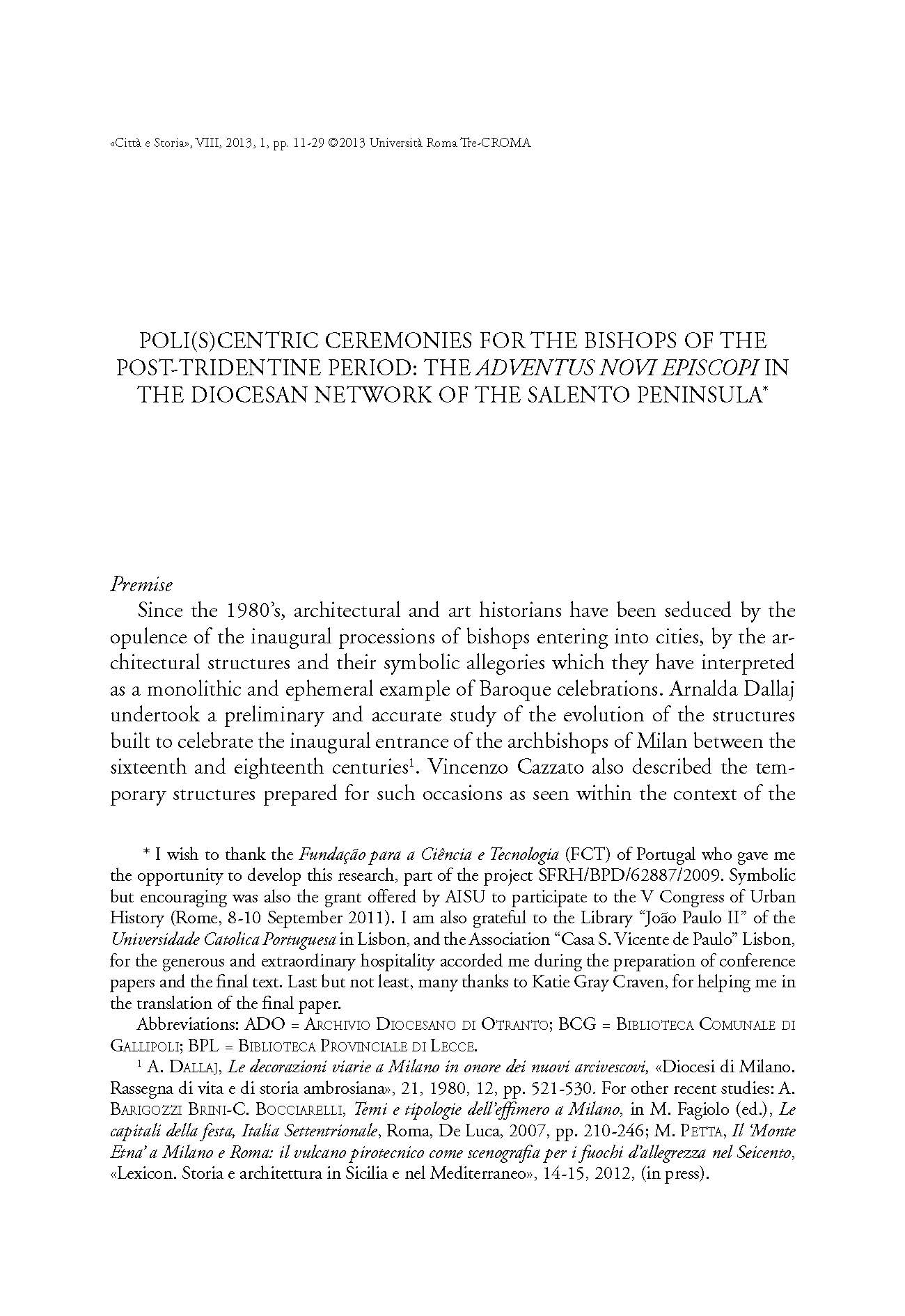Poli(s)centric Ceremonies for the Bishops of the Post-Tridentine Period: the adventus novi episcopi in the Diocesan Network of the Salento Peninsula
6,00 €
Since the 1980’s, architectural and art historians have been seduced by the opulence of the inaugural processions of bishops entering into Episcopal cities, by the architectural structures and their symbolic allegories which they have interpreted as a monolithic and ephemeral example of Baroque celebrations. The urban festivities studied were organized to celebrate the inauguration of bishops taking over their dioceses. However these extraordinary ceremonies were, in fact, a diverse mix of formulas, gestures, actions, and symbolic acts celebrated in many places intra et extra moenia civitatum. Our objective is to try to deepen the interpretation to date of this extraordinary rite, examining a peripheral region subject to the Spanish monarchy. The period studied is between the second half of the sixteenth century and first half of the eighteenth century, and the analysis compares heterogeneous inaugural ceremonies of newly appointed bishops of 5 Episcopal cities within the ecclesiastical system of the Salento Peninsula in the Kingdom of Naples.
Since the 1980’s, architectural and art historians have been seduced by the opulence of the inaugural processions of bishops entering into Episcopal cities, by the architectural structures and their symbolic allegories which they have interpreted as a monolithic and ephemeral example of Baroque celebrations. The urban festivities studied were organized to celebrate the inauguration of bishops taking over their dioceses. However these extraordinary ceremonies were, in fact, a diverse mix of formulas, gestures, actions, and symbolic acts celebrated in many places intra et extra moenia civitatum. Our objective is to try to deepen the interpretation to date of this extraordinary rite, examining a peripheral region subject to the Spanish monarchy. The period studied is between the second half of the sixteenth century and first half of the eighteenth century, and the analysis compares heterogeneous inaugural ceremonies of newly appointed bishops of 5 Episcopal cities within the ecclesiastical system of the Salento Peninsula in the Kingdom of Naples.

